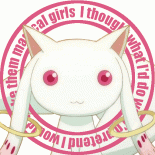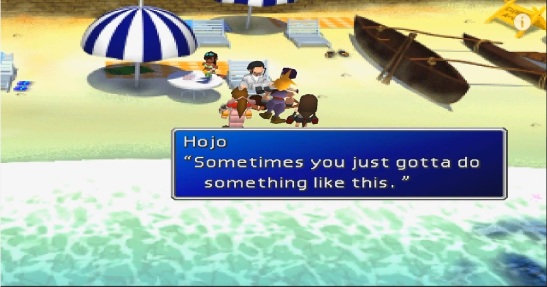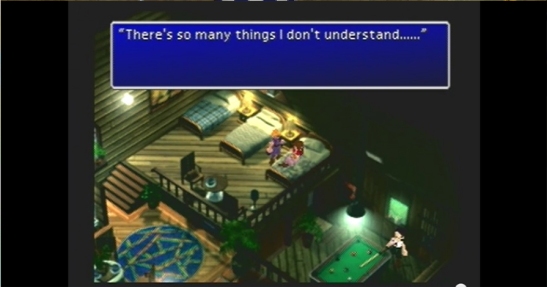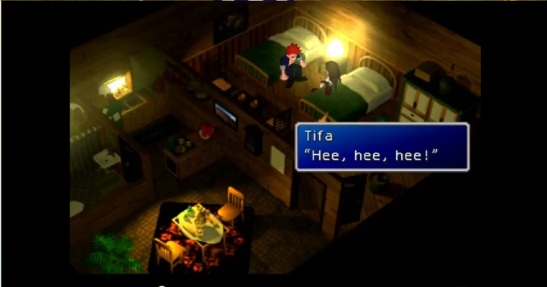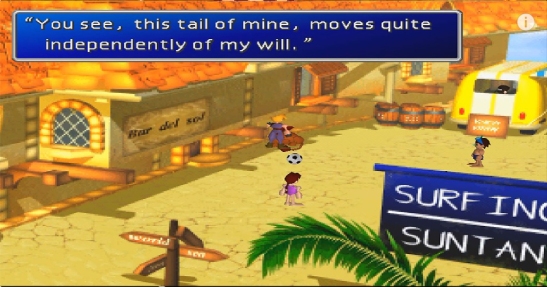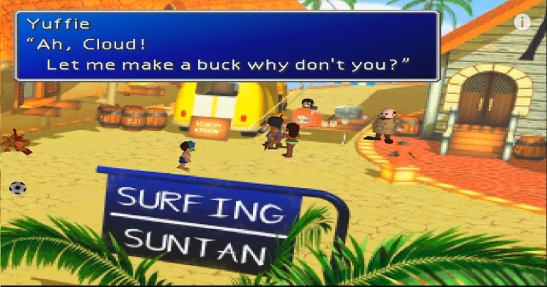Final Fantasy VII: Character Development In Costa De Sol
The E3 2015 reveal of the long-desired, long-dreamed Final Fantasy VII Remake was met with widespread joy and hype, with hundreds of reaction videos hitting YouTube overnight and the official trailer hitting over 10 million views and counting.

Nearly two weeks later, that excitement has not waned, but has been joined by anxiety and fear over how the remake of our dreams may turn out in reality. All sorts of discussions have flooded videogame forums across the internet, which carries its own entertainment as we excitedly argue and speculate over how Square Enix will reproduce the various aspects of the original game. The battle system currently remains one of the most discussed topics, with no unanimous agreement over whether they should stick to the original game’s classic ATB system, a more realtime action feel similar to the upcoming FFXV, or something even more over-the-top in the hopes of letting players experience the gravity-defying anime-inspired action sequences from Advent Children.
While a good chunk of the fanbase wonders with worry on whether Square will manage to preserve the gameplay of Final Fantasy VII, I stand among those who are more concerned on whether they will manage to preserve the story. Most FF battle systems have done right by me, but I seldom had the desire to grind every party member to 99 or defeat every optional mega-boss; for me, the most important aspect of a Final Fantasy has been its setting and characters. After all, being invested in a role playing game’s cast means that you would be given the motivation to see their stories through to the end, something I find important to have considering the massive length of most RPGs.
And as characters go, it is also my opinion that Final Fantasy VII has the best cast in the entire FF franchise. Not only that, it is my belief that the original game also had the best character development, thanks to the innovative and clever ways that FFVII would slowly-yet-routinely flesh out the party members throughout their journey.
For this article, I’ve decided to use Costa De Sol as an example of how brilliantly FFVII develops its characters. When Cloud and company first arrive at the beach resort, they are soon given the location of their next destination, as dictated by the story. Most players will immediately exit the town, unaware of the numerous conversations they could have with the other party members before leaving. These scenes are entirely missable and optional, and have no real bearing on the overall narrative. However, the fact that the developers took the time to include them goes to show just how much care they have put toward FFVII’s main cast, a loving amount of detail that is seldom seen in other RPGs (much less other Final Fantasies).
This article, the first of undoubtedly many that will come following this wonderful new world where the FFVII Remake is a real thing to anticipate rather than dream over, will look at each of these character moments in Costa De Sol, and how they work in service of developing each of the main cast in small, subtle ways.
1. The Villains
Let’s start things off with Hojo. After all, you are required to interact with the mad scientist in order to figure out your next destination. Most players tend to write off the bizarre imagery of Hojo lounging at the beach with a bevy of bikini-wearing beauties (all while keeping his lab coat on, no less) and quickly find their way out of Costa De Sol so they can continue their quest to pursue Sephiroth.
But leaving as soon as this encounter is over means that you are missing out on several of the neat little character moments that follow. In fact, Hojo’s little fun in the sun may not be as random as you might think; recall about how he had managed to convince Lucrecia to copulate with him in order to produce a child for the Jenova project (aka Sephiroth). It could be argued that Lucrecia rejected Vincent’s feelings in order to commit her body and soul to science.
Or perhaps Hojo is much more charismatic than we imagined. The women surrounding him in Costa De Sol could just be contractually obligated to follow his whims, being a powerful and wealthy man on top of the Shinra food chain. But speaking to the beach bunnies directly does not seem to suggest that they are forced into their situation, or even disgusted. If anything, it would be more plausible to assume that Hojo comes across as friendly and attractive toward the opposite sex; as one of the most unquestionably evil and irredeemable villains in Final Fantasy history, Hojo’s complete lack of empathy toward other people is a common trait among psychopaths. Another common trait is that psychopaths is their ability to sway other people with a false charm, particularly those of the opposite sex. In hindsight, seeing Hojo chilling about in Costa De Sol isn’t just comical, it’s also revelatory.
Talking to the ladies doesn’t just reveal things about Hojo, but Sephiroth as well. One of the NPCs remarks about how she saw a mysterious figure cloaked in black emerge from the ocean like some sort of phantom. This inhuman act coupled with the NPC questioning if what she saw was even real adds in to the very mystique of Sephiroth, as his actions during this portion of the game mirror that of a ghostly figure appearing and disappearing from peoples’ view.
2. Aerith
Prior to meeting Hojo, Tifa and Aerith had decided to take a swim together upon arriving at Costa De Sol. This gesture signifies the ongoing friendship between the two primary heroines, as the two tend to stay together whenever the group enters a new town and splits up.
Once they run into Hojo, the mood is soured, with neither girl interested in swimming at this point. From here the two go their separate ways, with players having the option to have Cloud check up on either of them. Players can run into Aerith sulking on a bed inside a nearby inn, which leads to a conversation where she contemplates her existence as the last remaining Ancient.
This is a significant sequence, because it shows a rare moment where Aerith isn’t brimming with confidence or continuing her flirtatious advances toward Cloud (in fact, she had teased him about the notion of seeing her and Tifa in swimwear just moments ago). For all of her childish attributes and sunny demeanor, Aerith has doubts and fears about her future, which ultimately leads to her pivotal (and tragically fatal) decision by the end of Disc 1.
3. Tifa
At first glance, Tifa’s sequence following the botched swimming plans seem less impactful than Aerith’s; she can be found conversing with her old friend Johnny in a private room. The two are engaged in seemingly pointless, friendly banter, to which Tifa even politely asks Cloud to give her and Johnny some privacy to catch up.
This next part may be considered reaching, but indulge me for a moment; what do we know about Tifa and Aerith’s common interest in Cloud? As far as Aerith is concerned, we know that she has no reservations about openly flirting with Cloud, to the occasional annoyance of Tifa. Tifa, meanwhile, takes on a more shy and subdued approach, trying not to let her personal feelings for Cloud out in the open. And we know that Johnny has feelings for Tifa, which likely sparked his decision to leave Midgar and make a name for himself out in the world (one of the most egregious translation errors of the original game’s localization is Johnny being written as another childhood friend of Cloud’s, when in truth the moniker is meant to be a somewhat mocking nickname, indicating his jealousy toward Cloud, as he sees him as competition for Tifa).
Assuming Tifa is aware of Johnny’s feelings for her, perhaps this private exchange isn’t just a friendly formality. Perhaps she is attempting to spur jealousy with Cloud, insisting that he leave the two of them alone while also hoping it would get him to notice her more closely. Once again, this could simply be Tifa continuing to be naturally friendly to the people around her, and lacks any ulterior motives. But since her attempts to win over Cloud are known to be counter to Aerith’s, this could be her attempt at taking a more indirect strike at the love triangle war.
4. Red XIII
In what may be the most comical of the party interactions in Costa De Sol, Red XIII can be seen attempting to rest underneath some shade as a group of children kick a ball in his direction. Rather than scaring the kids away, Red indiscreetly joins in the fun by whacking the ball back toward them with his tail. If you speak to Red directly, he’ll insist that he has no interest in playing around, and that his tail is acting on its own accord.
This kind of response is typical for Red XIII at this point; from the moment he joined your party, the formally captive animal was vocal about his contempt for humanity, displaying a stubborn amount of pride (as is typical of most fictional lions, or lion-hybrids). This small act with the children is another example of Red insisting that such human interactions are beneath him, yet he still indulges in such actions anyway, seemingly unaware or uncaring over how amusing he looks. That he should blame his own tail for acting independently is also a long-running character trait of Red’s, in which his animal instinct and human-like intelligence tend to clash with one another.
5. Yuffie
Another party member who chooses to spend her time outdoors, Yuffie can be seen working a part-time job selling Materia for a local street vendor. Unsurprisingly, Yuffie makes off with both the Materia and the money, much to the shopkeeper’s chagrin.
This scene merely establishes what we already know about Yuffie, in that she will take every opportunity to steal and swindle everyone she comes across in order to increase her collection of Materia. However, such Yuffie moments are both sparse and humorous, and are always appreciated.
6. Barret
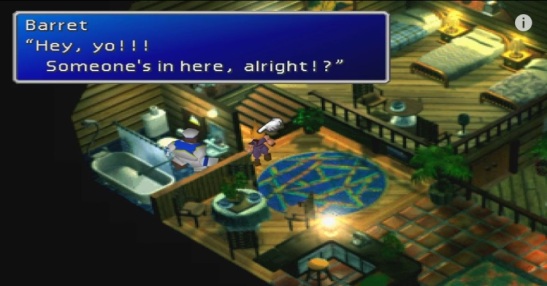 Barret’s time spent in Costa De Sol is also not very revelatory, and probably the strangest behavior he’s displayed yet. After being mocked by Cloud and company for his goofy sailor disguise, Barret insists that he’s grown accustomed to the uniform. Taking up a public bathroom to admire his new threads, it seems this was not just an empty bluff.
Barret’s time spent in Costa De Sol is also not very revelatory, and probably the strangest behavior he’s displayed yet. After being mocked by Cloud and company for his goofy sailor disguise, Barret insists that he’s grown accustomed to the uniform. Taking up a public bathroom to admire his new threads, it seems this was not just an empty bluff.
In a true case of overlooked dialog, players who manage to eavesdrop on Barret without alerting him will reveal his eagerness to show his new outfit to Marlene. Perhaps Barret is aware of just how ridiculous he looks, and hopes to amuse his daughter with his appearance. With this alone, it is consistent with Barret’s dutiful role as a father.
But if you’ll allow me to reach even further, I’d like to cheat a little by analyzing another scene with Barret that takes place in a different town, specifically Junon:
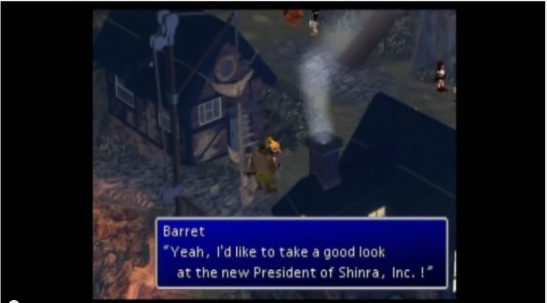 During this brief split-up while Cloud goes to play with a little girl’s dolphin in order to climb up an electrical tower (ah, 1997), Barret can be seen conversing with a fisherman. There is no real exchange between the two; Barret seems eager to introduce the newly elected Shinra president to a bullet while the fisherman complains about the dried up fishing due to Shinra’s pollution.
During this brief split-up while Cloud goes to play with a little girl’s dolphin in order to climb up an electrical tower (ah, 1997), Barret can be seen conversing with a fisherman. There is no real exchange between the two; Barret seems eager to introduce the newly elected Shinra president to a bullet while the fisherman complains about the dried up fishing due to Shinra’s pollution.
But knowing Barret, it also seems perfectly natural that he would engage in a friendly chat with someone who is both anti-Shinra and dependent on making a living through natural resources. Since Barret himself is a former coal miner, perhaps his fondness for the sailor uniform is an extension of his fondness for working in the outdoors and living off the land, while also opposing Shinra for taking a similar, but much more damaging approach through their siphoning of the planet’s lifeblood.
7. Cloud
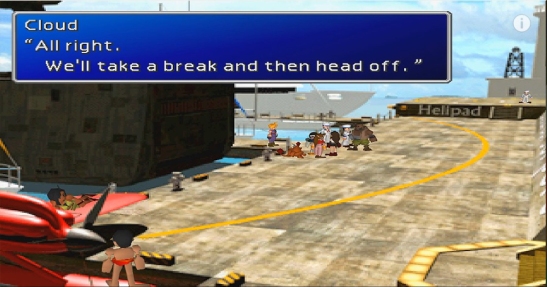 What makes all of these little character moments so impressive is that they can be skipped over entirely. The original Final Fantasy VII is filled to the brim with optional dialogue and fun little Easter eggs, that even the most hardcore fans who have replayed the game countless times may still find a scene or two they didn’t know existed.
What makes all of these little character moments so impressive is that they can be skipped over entirely. The original Final Fantasy VII is filled to the brim with optional dialogue and fun little Easter eggs, that even the most hardcore fans who have replayed the game countless times may still find a scene or two they didn’t know existed.
But it isn’t just Cloud’s fellow party members who are slowly fleshed out during these personal exchanges: one of the big things overlooked by fans over the years is that in the original game, much of Cloud’s interactions and responses with the people around him are dictated by the players themselves. They choose how Cloud will respond to someone; they choose whether he will show sincerity or snark, platonic interest or romantic, etc. while also choosing whether to engage with anyone at all. The fact that so many of these scenes can be skipped entirely goes to show how much detail Square had crammed into the PS1 classic, as well as creating an ideal balance between unskippable story beats with required exposition and small-yet-satisfying character moments littered throughout the game.
One can only hope that they emulate much of the original game’s approach to storytelling and character interaction in the Remake. HD cutscenes with full voice acting and detailed expressions are certainly nice, but I can only hope that comes without sacrificing these little conversations, or the way they compliment the cast of Final Fantasy VII.
